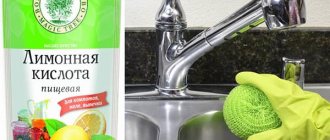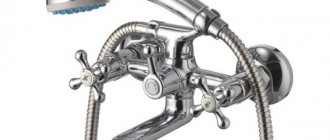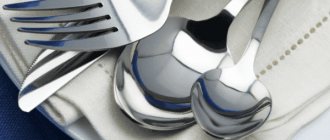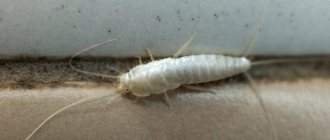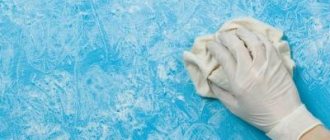Not every housewife knows how to wash a bathroom curtain, and therefore, when it loses its presentable appearance, the curtain is often sent to the trash instead of bath procedures. By the way, with thin products made from cheap oilcloth, sometimes this is the easiest and most correct thing to do. However, if you have a high-quality and beautiful curtain that is dear to your heart for various reasons, we recommend that you follow a number of rules and it will serve you for many years.
Why do you need a curtain for the bathroom?
Most people have an idea of how difficult it can be to get rid of limescale and sloppy yellow stains on bathroom curtains. Therefore, a completely logical question arises: why is this accessory needed at all?
A curtain in the bathroom is an important thing. It helps to zone the space of the room and protects against splashing during bathing.
There are several reasons why you should use a curtain when using your shower or bathtub:
- Safety. Thanks to the curtain, water will not splash throughout the bathroom, which means it will not get on the tiles on the floor and will not make the floor even more slippery.
- A constantly wet floor covering (tile, carpet or other) is an excellent breeding ground for fungus and mold, as well as other pathogenic bacteria.
- Aesthetic component. A well-chosen bathroom curtain design makes the room attractive and stylish. At the same time, the curtain can become both the main accent of the interior and a creative addition to the overall design.
- Zoning of space. Thanks to this bathroom accessory, it becomes possible to hide your most intimate secrets from prying eyes.
A bathroom curtain should be environmentally friendly, aesthetic and practical.
Recommendations
If you decide to wash your bathroom curtain at home, you should remember and follow the basic recommendations regarding the care of such products:
- Try to ventilate the bathroom from time to time. This is useful not only for the shower curtain, but also for other furniture and items found in your bathroom.
- When working with detergents and cleaning products, use protective gloves to avoid an allergic reaction or irritation of the skin on your hands.
- When cleaning curtains from mold and mildew, it is advisable to use a medical mask or respirator. The spores of these organisms can spread in the air, and it is best to protect yourself from inhaling these microscopic particles.
- Polyethylene curtains require the most frequent cleaning and washing. Their material is the thinnest, and is more susceptible to penetration of contaminants and microorganisms into the fibers than other types.
- Do not wash curtains made of any material in cold or hot water. Cold water will compress the fibers of the material, and this will not allow you to thoroughly rinse the curtain from stubborn dirt. Hot water can warp synthetic material. The exception is fabric products; they can be washed at temperatures up to 60 degrees. However, in any case, check the recommendations on the product label.
- After washing, you can soak the curtain in a salty solution and dry the curtain without rinsing it off. Salt will create a protective layer on the surface of the curtain, which will repel bacteria and dirt for some time.
- Before any type of washing, it is better to remove all rings from the curtain. When machine washed, they can detach from the curtains and damage the drum or break, because they are often made of plastic. And when washing by hand, they will interfere with you.
- It is most convenient to wash the bottom of the curtain without removing the curtain from the holder. Fold the bottom of the curtain inside the bathroom so that the edge of the curtain is placed on the inner side surface. In this position it is very convenient to clean the bottom of the curtain with a sponge and rinse with a shower.
You will learn more about how to wash bathroom curtains in the following video.
Varieties
The modern market offers a decent range of curtains. Models differ in material, color, mounting methods, etc.
By the way, the type of fastening is a very important point for choosing the right curtain. This can be a regular rod (the most common option), eyelets, magnets, chains and others.
For long-term operation of this accessory, it is important to choose the right material from which the curtain will be made and the type of its fastening.
The choice of material is also very important both for the operation of the accessory and for its care. Available today:
- Polyethylene curtains.
This is the most affordable and popular option. Such curtains are sold at any plumbing or household goods store. Curtains are not designed for long-term use. They wrinkle very quickly, lose their original appearance and become an ideal place for fungus and bacteria to live. But, thanks to the budget cost, it is possible to change polyethylene curtains quite often, maintaining the aesthetic appeal of the bathroom. Therefore, even such a short-lived option should not be discounted. - Bathroom curtains made of polyvinyl chloride. This model will last much longer if you follow simple care instructions. These curtains can be washed in a washing machine.
- Polyester is actively gaining popularity. Such curtains have a special impregnation, thanks to which they become water-repellent.
- Hard curtains.
This is a slightly different option, however, it has become increasingly popular lately. If previously such “curtains” were used exclusively for showers, today they are also used for ordinary baths. Why are they valued? For compactness, reliability, safety, long service life, as well as for a minimalist “appearance” that easily “takes root” in any interior.
Today, plastic or glass rigid curtains are increasingly being installed.
What to consider?
When choosing how to care for your bathroom curtain, pay attention to the material from which the curtain is made.
Among the most common options, there are several. Among the most common options, there are several.
- Polyvinyl acetate, polyvinyl chloride. Products made from vinyl and polyester are easy to clean, they are strong and durable. To care for such materials, it is recommended to use bleaches and powders.
- Fabrics with impregnation that repels liquid. Such curtains are practical and comfortable. You can easily wash water off the curtain (thanks to the impregnation). There will be no marks on her after this. It is recommended to wash such materials weekly.
- Polyethylene curtains. They are short-lived and cheap. In the absence of the necessary care, they have to be changed monthly. Cleaning can be done using baking soda or special products. If such a curtain is carefully looked after, it can last about six months (it is recommended to clean the polyethylene rather than wash it).
- Glass products. To care for such surfaces, ordinary household chemicals for cleaning glass are quite suitable. Glassware can also be cleaned with a steam cleaner.
It is better to clean the curtain, focusing on the rules indicated on the label. Usually there is all the necessary information: is it possible to use household chemicals with chlorine, at what temperature to wash, is it possible to wash a bathroom curtain at all.
How to choose a curtain for a specific bathroom
Before you go to the store, you should ask yourself a number of questions:
- Which mount do you prefer and is it suitable for your bathroom?
- What do you prefer: hard curtains or a soft option?
- What color will “fit” into your interior?
An interesting option is a rigid screen curtain.
Cleaning methods
No matter how carefully you choose your curtain model, sooner or later you will have to deal with a problem such as limescale. Let us immediately note that, according to statistics, approximately 80% of housewives prefer to throw away a yellowed curtain rather than somehow deal with unpleasant stains.
First of all, this choice is explained by the erroneous opinion that limescale is forever. However, having the necessary information, you can resolve the issue with minimal time and money.
There are two ways to wash a curtain: in an automatic machine or manually. The method is selected depending on the manufacturer’s recommendations (as a rule, all the information is on the label on the curtain), and you also need to take into account the material of the fabric.
Today, bathroom curtains are made from polyester, vinyl or polyethylene. Vinyl and polyester curtains withstand both hand washing and cleaning in a washing machine. The use of different powders and even bleaches is allowed.
Polyethylene curtains for the bathroom are a budget option. They are distinguished by their simple appearance and short service life. In the best case, such a curtain will last 1.5-2 years, and if not properly cared for, it will have to be thrown away after a month. These curtains are rarely washed (in the full sense of the word), but they can be cleaned well with special products.
Handwash
Housewives do not use this method too often, despite the fact that it is ideal for curtains made of vinyl, polyester or polyethylene. If the bathroom curtain is made of fabric, then the recommendations below will not work.
Hand washing will not take much time and effort.
Procedure:
- Pour warm water into a basin and add citric acid and soda, based on 3 liters of water: 1 teaspoon of soda and half a teaspoon of acid.
- Soak the curtain in the solution and leave for 1 hour. Make sure the fabric is completely wet.
- After soaking, it is recommended to lightly knead polyester curtains with your hands, and then even the most difficult stains will come off.
- Finally, rinse the curtain in clean water and hang it to dry.
Lemon has long established itself as a good fabric bleach.
It is also recommended to add a little white when soaking to clean the curtain from yellowness and mildew. Due to the chlorine content, whiteness helps cope with fungal spores.
Whiteness will help cope with the fungus, but you need to be careful with this remedy.
If the curtain is very dirty, then after soaking it should be washed with the addition of detergents, and only then rinsed and hung to dry.
Machine washable
Using an automatic washing machine, you can save time and effort to achieve good results. Thanks to automation, you can return the curtains to their original appearance. The main thing is to choose a delicate mode, and also do not forget to turn off the spinning and drying, as these actions can hopelessly ruin your bath or shower curtains.
For washing in a machine, it is better to set it to the delicate cycle.
According to experts, in order to always keep your curtains fresh, it is enough to wash them in the machine once a month. If the curtain is very dirty, then before placing it in the automatic machine, it is recommended to soak it in water with the addition of bleach.
Soak in bleach for no more than 2-3 hours.
Important! Bleach is added only if the fabric can “transfer” it; as a rule, all the necessary information is on the labels. Water (about 5 liters) is poured into a basin and 2-3 caps of liquid bleach are added. Soak should be for 2-3 hours.
If the curtain cannot be washed with chlorine-containing bleaches, then you can add a little bleaching products for children's clothing. Such compositions are more gentle and will not damage the fabric.
An interesting nuance: to make machine washing more efficient, it is recommended to add a couple more towels along with the curtain.
After washing the curtain in the washing machine, you need to soak it for half an hour in salted water. Thanks to this, an invisible protective layer will appear on the surface of the canvas, which will protect against stains, and the curtain can be washed less often.
Water for washing in a machine should not be higher than 40 degrees.
Removing stubborn stains
The most common types of stains in the bathroom are limescale, yellow soap deposits and mold. They are prone to high humidity, frequent contact with water and hygiene products. The entire room is affected, but the curtain suffers especially if, after bathing, it is not properly wiped or straightened to dry.
As a rule, with regular cleaning, stains do not become embedded in the products. But if you forget to wash the curtain several times, you won’t be able to do it without special techniques. We will consider below how to effectively deal with various contaminants.
Mold
The fungus has the ability to penetrate deeply into the tissue. It withstands any chemical attack, treatment with soda, vinegar, salt, alcohol, citric acid. All of the above means only stop the reproduction of spores. To remove mold stains from curtains, you need high-quality mechanical cleaning. In simple words, the product needs to be soaked in the solution (for 5-6 hours), and then thoroughly rubbed with a bristle brush.
Recipes:
- 5-7 caps of Dometsos or Belizna per 5 liters of water;
- table vinegar with warm water in a ratio of 1:3;
- 200 g of citric acid per 5 l.
You can spot-apply ammonia diluted in half with water against mold, or spray any of the listed solutions from a spray bottle. But the most crucial moment is brushing. For greater effectiveness, it should be dipped in baking soda.
Yellowness
An acidic environment will help get rid of yellow plaque, whatever its origin (traces from soap, lime from water). The same vinegar or citric acid is perfect for these purposes. But there is one little secret: the method will only work if the water is hot. To prevent the entire product from deteriorating, the acidic solution should be sprayed pointwise onto the yellowness. Proportions – 5 tbsp. spoons of vinegar per 300 ml of water or 7 teaspoons of citric acid for the same volume. Within 3-4 hours you need to refresh the solution several times.
To completely remove yellowness from the curtain in the bathroom, at the final stage of treatment, dirty areas should be rubbed with a brush with liquid detergent mixed with 1 teaspoon of soda. Now all that remains is to rinse everything thoroughly and hang the curtain to dry on the balcony.
How to remove rust stains
How to wash a bathroom curtain to remove not only surface dirt, but also rust stains? It will take serious effort, especially if we are talking about old stains. And yet there is a proven method.
- First, make a solution of ammonia and hydrogen peroxide in a 3:1 ratio.
- Apply the solution directly to the stains and rub lightly with a sponge.
Peroxide and ammonia are effective stain removers.
If the stains do not come off, then you need to moisten a napkin in the solution and apply it to the stain for 20-30 minutes. And after this, the curtain must be washed in the usual way.
You can use proven products from well-known or Sanit. Apply the product to the stain with a soft sponge, leave for a few minutes, and then remove with a damp sponge.
Important! Do not forget about safety precautions, be sure to use gloves and, if necessary, a respirator. And remember that regular airing of the bathroom and curtains when straightened will prevent the appearance of fungus and rust stains.
Possible contamination
Dirty bathroom curtains do not look very attractive, especially if they are light colors. Any stains, traces of mold and rust are immediately noticeable and, moreover, can cause the development of allergies. The easiest option is to throw away the damaged product. But the cost of high-quality curtains now is not small and it is better to try to bring the curtain to its original form. First of all, you need to know what types of contaminants can appear on a piece of bathroom furniture:
- yellowness and rust. Such defects usually appear at the bottom of the curtain due to constant contact with soapy water and foam;
- whitish stains. Appear on the curtain if the water in the tap flows with a high content of calcium and magnesium salts, due to which it becomes hard. After the drops dry, white marks remain on the product;
- fungus or mold. These living organisms reproduce where a warm and humid environment is present. The bathroom is just such a room. Fungi and traces of mold can often be seen on furniture, walls and curtains when there is no quality ventilation.
Fungus on a bathroom curtain - possible contamination
Of course, it is better to prevent such situations from occurring, but if this has already happened, you should know what control methods exist.
How to get rid of fungus and mold
Fungus and mold are not just an aesthetic problem. Because of them, serious health complications often arise. Young children and allergy sufferers are especially sensitive to the effects of spores. And if you still decide to wash such stains rather than throw away the curtain, be sure to arm yourself with the means to protect yourself: gloves and a mask.
Both industrial compounds and improvised means, such as soda and vinegar, will help get rid of fungus and mold. The algorithm of actions is as follows:
- First, use a sponge to remove all visible dirt from the curtain.
- Warm water is poured into a basin and soda and vinegar are added.
- The curtain is soaked in the solution for about 10 minutes.
- Rinse thoroughly in cool water. If necessary, rinsing can be repeated.
- The curtain is hung until completely dry.
There are always products in the kitchen that do an excellent job of removing stains.
Many housewives use Domestos to combat mold stains.
The composition is simply poured onto the stain, left for a few minutes, and then washed off with warm water and rinsed the curtain thoroughly. It is not recommended to use boiling water, because although it destroys mold, it is destructive for some fabrics, destroying the structure.
Manually
Every housewife should know how to wash a bathroom curtain. Can be washed in cool water.
Products made from polyester are washed using a soft sponge, pre-moistened in warm water.
Answering the question: how to wash a curtain with heavy dirt, experts point to cleaning the accessory with a thick soda mixture using a brush, rinsing in water at a temperature of 40 - 60 ° C and citric acid dissolved in it.
The list of folk methods used to give a practical answer to the question: how to wash a curtain in a bathroom includes any detergents that are applied to the products using a spray bottle, wiped with a sponge and cleaned of any remaining cleaning mixtures with damp rags.
A curtain in the hygiene room that is heavily soiled is washed by hand using bleach.
Add one capful of bleach to cold water poured into a basin. The product is placed in the solution for 1 hour, the dirtiest areas are cleaned with a brush and the bath curtain is rinsed under running water.
Frequently asked question: how to use "domestos"? To use chlorine-containing products, it is necessary to protect the skin of your hands with rubber gloves. Apply the concentrate to the surface of the pre-wetted curtain for only 15 minutes. Rinse under running water.
How to remove limescale
Another problem that every housewife has encountered is limescale. Dried drops of barely noticeable white color can ruin the appearance of the most stylish bathroom. An excellent solution for removing plaque is citric acid. It is added both when soaking the curtain and during subsequent washing in an automatic machine.
Citric acid, which is found in every home, will do a great job of removing plaque and stains.
Table vinegar and chlorine bleach have also worked well; the main thing is to use these “aggressive” substances in the correct proportions.
The process is extremely simple: the product is added to the water to soak the curtain, and then the curtain is rinsed and washed at the desired setting in the machine.
After soaking, simply wash the curtain on a gentle cycle in the machine.
The best protection against the appearance of limescale is regular washing. It is also important to set your machine to a delicate wash cycle and use the right detergents. If the curtain is made of delicate materials, do not forget to add conditioner.
An important point: no matter what kind of stain and plaque remover you use, it is very important to properly dry the curtain after washing.
Washing in an activator type machine
When washing curtains in an activator type machine, you can even do without powder. You should proceed as follows.
- Soak the curtain in warm water overnight. A suitable bleach can be used to improve efficiency. If it is not available, you can use shavings of laundry soap or special Antipyatin soap.
- Scrub the most contaminated areas (at the bottom of the curtain, near the seams) with an unnecessary toothbrush.
- Fill the machine with water by pouring a glass of baking soda into it. Place a curtain and two waffle towels. Wash it. Drain the water. Do not squeeze the curtain.
- Take water for rinsing, pour a glass of table vinegar into it, rinse, drain the water.
- Shake the curtain well and hang it in the bathroom until completely dry without squeezing it.
It is better to remove the rings that secure the curtain before washing so that they do not come off and damage the machine. This also applies to washing in automatic washing machines.
How to dry a bathroom curtain correctly
After washing, the curtain must be dried properly. Experts are categorically against spinning in any form, regardless of the material of the product. Even if you lightly squeeze the canvas, folds will remain on it, and the curtain will have an untidy appearance.
After washing, do not wring it out under any circumstances. Simply hang the curtain in place and let it dry naturally.
How to dry it properly?
- Immediately after washing (by hand or by machine), the curtain is carefully laid out in the bathroom so that the water drains from it.
- Then the canvas is hung in such a way that there are no folds on it.
- If there is a cord above the bathtub, this is an ideal place to dry the curtain.
- You can also dry the canvas in the open air, for example, on the balcony, the main thing is to ensure that the curtain does not receive direct sunlight.
- Under no circumstances should you dry it near heating devices. This applies to any household appliance: from a heater to a stove. The whole point is that when drying like this, yellow spots will appear on the curtain, which will be impossible to remove. In addition, this method is simply not safe.
- Under no circumstances should you iron bathroom curtains. High temperatures cause the fabric to shrink and then such a curtain can only be thrown away; it is unsuitable for use.
Caring for plastic and glass curtains
If you still prefer glass or plastic curtains, then there are a number of simple recommendations that will help maintain their original attractiveness longer.
A plastic or glass curtain is cared for in the same way as other glass surfaces.
Glass curtains:
- For care, use soft cloths or sponges.
- Window and mirror cleaners are suitable for cleaning the surface.
- Do not use alkaline compounds under any circumstances, as they can damage both the surface of the glass and the metal fastening elements.
- The use of abrasive agents is also unacceptable, since barely noticeable scratches remain on the surface, which become deeper and more obvious over time.
To prevent splash marks from remaining on the glass surface, regularly treat it with a special water-repellent compound. Often glass curtains are sold with a special coating. However, its validity period is not that long - 6-7 months.
Important! Metal elements (fastenings or decor) can become rusty, so it is important to wipe them dry after each bath or shower.
Plastic curtains are inferior in performance to glass curtains, which means they require even more careful operation and care. But in general, recommendations for caring for plastic curtains are very similar to those for glass surfaces.
To clean such curtains, use soft sponges and cloths.
You should use only soft cloths and sponges, avoid the use of aggressive compounds, as well as preparations containing abrasive substances. You need to be especially careful when dealing with caustic chemical compounds. With proper care, even the most capricious materials will last quite a long time.
Rust stains, limescale, and mold are not the most pleasant manifestations of a humid environment. However, it is obvious that it is not at all necessary to get rid of your favorite curtain in the bathroom if you notice the above stains.
Today, chlorine-containing compounds are available that will quickly and reliably remove stains from curtains. And if desired, you can use improvised means, such as soda or vinegar. The main thing is to carefully read the recommendations for washing and cleaning curtains for the bathroom or shower.

